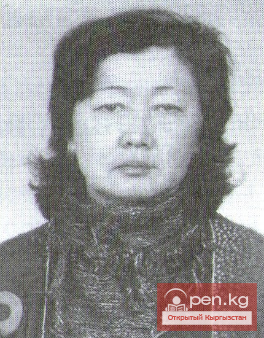
One of the leading masters of drawing in the collective of graphic artists of Kyrgyzstan in the 60s and 70s was A. Mikhalev. In his modest life drawings, primarily landscapes and less frequently portraits, the artist aimed to convey the characteristic aspects of nature, as well as his relationship to artistic form. "The artist, in working on form, deals with two things — the object and space. These two opposites are the main components of the image. Space struggles with the object, trying to dissolve it within itself; the object protests, asserting its dominance over it, demanding its own place in extension, displacing space with its volume." In Mikhalev's best drawings from the 60s and 70s, artistic integrity of the image is achieved ("Near Medeo," 1962; "Oksana Mishchenko," 1963, painting; "Manaschi," 1967, painting; "Atbashi," 1967, marker; "Portrait of a Girl," 1968, painting; "Tree," 1970, marker; "Nurjan," "Uryuk," 1973, pencil drawing). His careful attitude towards nature, clarity of spatial-plastic tasks, and abundance of light and air are especially characteristic of the artist's pencil drawings, where the image moves into the depth of the sheet with a clear subordination of forms. A unique series of drawn compositions on a political theme "In the Free World" (1971, charcoal) stands apart in Mikhalev's work. His pastel drawings, created during foreign trips (Hungary, Italy, Spain, Holland, France, Japan, countries of Africa and the Mediterranean), are distinctive and less rational. They are characterized by subtle emotionality, vividness, and elegant conciseness of form ("Street in Capri," 1961; "Freetown, Sierra Leone," 1966; "Port Dakar, Senegal," 1966).









































